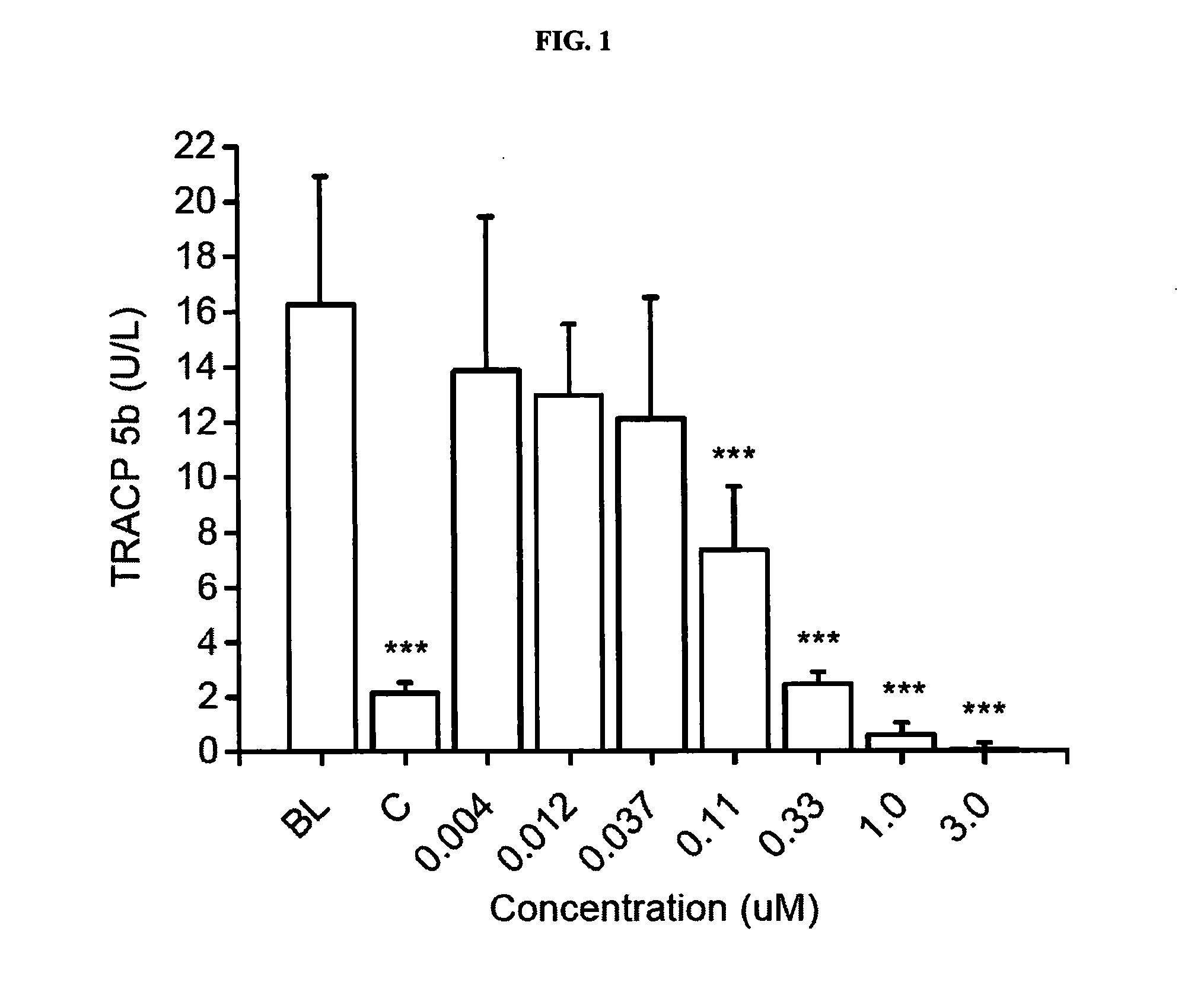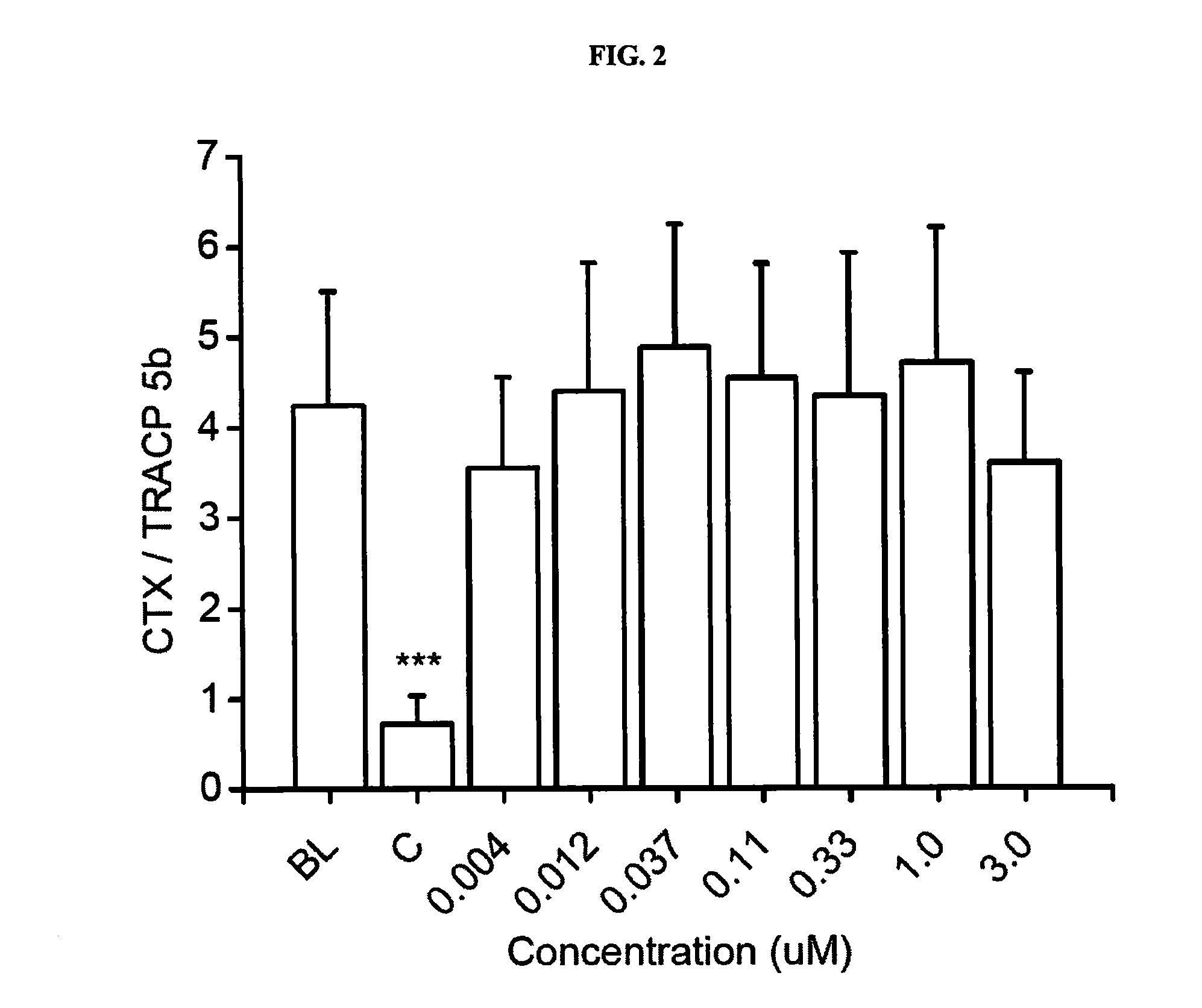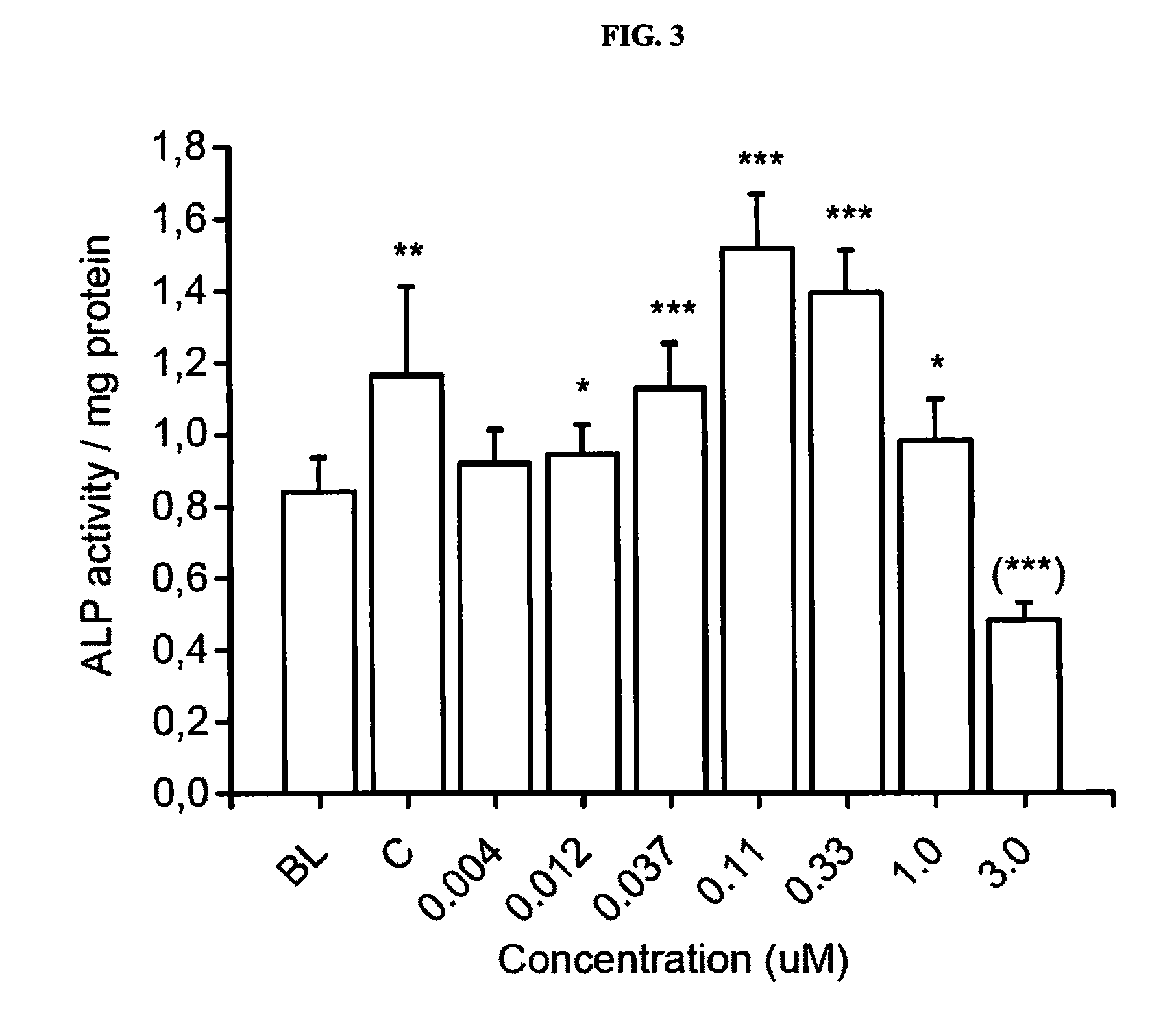Method for Treating Osteoporosis
a technology for osteoporosis and treatment, applied in the field of osteoporosis treatment, can solve the problems of increased fracture risk, increased bone fragility, affecting both men and women, etc., and achieve the effect of modulating bone turnover
- Summary
- Abstract
- Description
- Claims
- Application Information
AI Technical Summary
Benefits of technology
Problems solved by technology
Method used
Image
Examples
embodiments
[0054]In one embodiment the compound of Formula I is the compound of Formula Ia:
or a pharmaceutically acceptable salt thereof, wherein:
[0055]R1 is halo;
[0056]R2 is halo; and
[0057]Q is CH or N.
[0058]In another embodiment, the compound of Formula I is Compound 1:
or a pharmaceutically acceptable salt thereof.
[0059]As indicated previously, Compound 1 is referred to herein as N-(4-{[6,7-bis(methyloxy)quinolin-4-yl]oxy}phenyl)-N′-(4-fluorophenyl)cyclopropane-1,1-dicarboxamide. WO 2005 / 030140 discloses Compound 1 and describes how it is made (Example 12, 37, 38, and 48) and also discloses the therapeutic activity of this compound to inhibit, regulate and / or modulate the signal transduction of kinases, (Assays, Table 4, entry 289). Example 48 is on paragraph [0353] in WO 2005 / 030140.
[0060]In other embodiments, the compound of Formula I, Ia, or Compound 1, or a pharmaceutically acceptable salt thereof, is administered as a pharmaceutical composition, wherein the pharmaceutical composition ad...
example 1
Testing of an Compound 1 in Both Osteoclast and Osteoblast Differentiation and Activity Assays In Vitro
[0152]The objective of this study was to investigate the effects of 7 concentrations of Compound 1 on differentiation and activity of human osteoclasts and mouse osteoblasts in vitro. The following concentrations were tested: 0.004, 0.012, 0.037, 0.11, 0.33, 1.0 and 3.0 μM. The study was performed using human bone marrow-derived CD34+ osteoclast precursor cells that were cultured on bovine bone slices, and KS483 mouse osteoprogenitor cells that were induced to differentiate into bone-forming osteoblasts.
[0153]The study was performed in four parts. In the first part, human bone marrow-derived CD34+ osteoclast precursor cells were cultured on bovine bone slices for 7 days, after which the formed osteoclasts were quantitated by measuring tartrate-resistant acid phosphatase 5b activity (TRACP 5b) in the culture medium. This assay demonstrates the effects of Compound 1 on osteoclast dif...
example 2
Short-Term Effects of Compound 1 on Bone Turnover Markers in the Rat Ovariectomy (OVX) Model
[0248]The objective of this study was to investigate short-term effects of Compound 1 on biochemical serum markers of bone metabolism in a prevention study in a rat ovariectomy (OVX) model for postmenopausal osteoporosis. 17β-estradiol (E2) was used as a reference compound. The following five experimental groups were included in the study:
[0249]1) SHAM-operated control rats receiving vehicle (5 ml / kg / d p.o.)
[0250]2) OVX control rats receiving vehicle (5 ml / kg / d p.o.)
[0251]3) OVX control rats receiving 17β-estradiol (4 μg / kg / d s.c.)
[0252]4) OVX rats receiving test compound Compound 1 (1 mg / kg / d p.o.)
[0253]5) OVX rats receiving test compound Compound 1 (3 mg / kg / d p.o.)
[0254]Each group contained eight female rats (Sprague-Dawley) that were three months of age at the beginning of in-life phase of the study. Before the start of the in-life phase, animals were weighed, their blood samples were harv...
PUM
| Property | Measurement | Unit |
|---|---|---|
| Mass | aaaaa | aaaaa |
| Mass | aaaaa | aaaaa |
Abstract
Description
Claims
Application Information
 Login to View More
Login to View More - R&D
- Intellectual Property
- Life Sciences
- Materials
- Tech Scout
- Unparalleled Data Quality
- Higher Quality Content
- 60% Fewer Hallucinations
Browse by: Latest US Patents, China's latest patents, Technical Efficacy Thesaurus, Application Domain, Technology Topic, Popular Technical Reports.
© 2025 PatSnap. All rights reserved.Legal|Privacy policy|Modern Slavery Act Transparency Statement|Sitemap|About US| Contact US: help@patsnap.com



